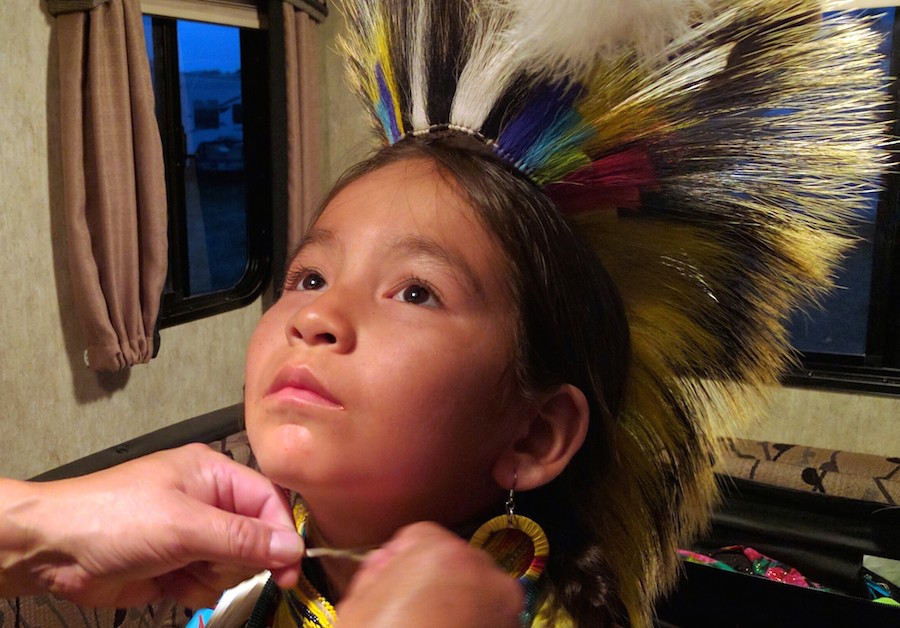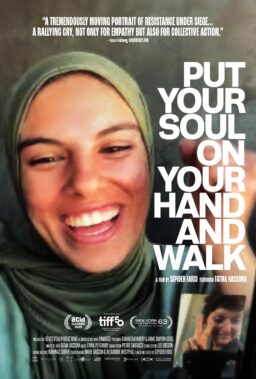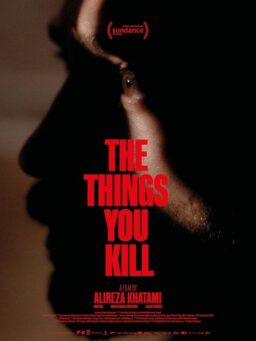One of the pleasures of a great film festival is the heightened attention of its audience. Small moments that would’ve likely escaped the gaze of more passive viewers are savored with audible glee at Hot Docs, North America’s largest documentary film festival, held annually in Toronto, Ontario since 1993. Though this year’s installment—running from April 27th through May 7th—has plenty of unsettling and urgent selections to spare, the opening night film set a more optimistic and warm-hearted tone. Lana Šlezic’s “Bee Nation” had its world premiere on Thursday night, and proved to be an immense crowd-pleaser, serving as a love letter to both the indigenous people of Canada and to the city of Toronto itself. Though comparisons will instantly be made to Jeffrey Blitz’s 2002 Oscar-nominated doc, “Spellbound,” what distinguishes this equally endearing portrait of a spelling bee are its participants. Šlezic set out to chronicle the journeys of various children at the Kahkewistahaw First Nation Reserve as they compete in their very first province-wide spelling bee, with the hopes of moving on to the national competition in Toronto, a metropolis that looks even more wondrous when viewed through the eyes of these kids. All of the pint-sized subjects are engaging, yet the one who all but walks off with the picture is William Kaysaywaysemat III, an eight-year-old whose wonderfully expressive body-language conveys his ambition in every gesture and squirm. His competitiveness has caused him to excel far beyond most of his peers, yet it has also resulted in him being too hard on himself. Rather than push him past the brink of exhaustion, his loving parents attempt to put things in a more grounded perspective. When his father insists that the outcome of the spelling bee doesn’t matter as long as he “tries his best,” William shoots him a sideways glance that affirms how no outcome other than winning will be acceptable to him. It’s a fleeting detail, but at Hot Docs, it brought down the house.
Like “Spellbound,” “Bee Nation” relies on the inherent suspense of watching kids carefully reciting the spelling of increasingly formidable words. One misplaced letter could eject them from the competition, and the more invested you are in the kids’ plight, the more nail-biting it is to observe their every stutter and hesitation onstage. Spelling bees can be empowering events, but they can also be rather pathological, forcing kids to agonize over words that would baffle most adults (“soutache,” anyone?). Such a rigorous dissection of language only amplifies its peculiarities and inconsistencies. It’s entirely understandable that William would replace the “o” in “fathom” with a “u,” since his vision of the word makes more sense phonetically. Yet Šlezic focuses less on the contest results and more on the First Nation community, which has triumphed in educating its youth despite a criminal lack of funds. The presence of three kids from the reservation at the national competition is a remarkable achievement, allowing the world to expand for these kids far beyond the boundaries of their home. During the post-screening Q&A, the principal of Chief Kahkewistahaw Community School, Evan Taypotat, delivered an impassioned plea for Canadians to band together in support of closing the funding gap that causes his students to have less resources than those at neighboring schools. He and Šlezic want the audience to view these kids as if they were their own, and considering the crowd’s emotional response to every victory and loss endured by the contestants, there’s no question “Bee Nation” accomplishes its mission beautifully.

There is a scene in Anna Zamecka’s Locarno prize-winner, “Communion,” where a 13-year-old autistic boy, Nikodem, is sternly informed in church that “anger is a sin.” The boy can’t help bursting into laughter, and though his reaction may seem inappropriate to the average bystander, it is—like everything he says—an entirely sensible and clear-eyed response. Labeling a natural emotion like “anger” as a sin is an easy way to automatically cast everyone as sinners. It is bad enough to feel angry, even worse to feel ashamed of it, thus building an even deeper resentment. If anyone has a god-given right to be angry, it is most certainly Nikodem’s sister, Ola. She only happens to be one year older than her brother, but she has found herself tasked with running her entire household. No help can be found from her alcoholic father, who sits watching TV all day, nor her mother, who converses with her daughter over the phone and keeps making excuses for her perpetual absence. Nikodem’s autism is never acknowledged by either parent, forcing Ola to single-handedly mother him, performing every duty from washing his hair to tying his shoes. Resembling a real-life version of Jennifer Lawrence in “Winter’s Bone,” Ola is in the mold of children from a much earlier era who were forced to grow up while their parents left home for months at a time. I was reminded of how Abraham Lincoln’s father left his children to fend for themselves as he searched for a new wife after his previous one perished. The maturity and self-sufficiency that Ola exudes is simply awe-inspiring, and though her treatment of Nikodem can occasionally be harsh, her abiding love for him and her parents is never in question. When the congregation at her church is told that “parents are responsible for their children’s religious education,” Ola takes it upon herself to prepare her brother for his First Communion, struggling to sustain his wavering attention span just long enough for him to memorize the basics of their ideology. When the priest tests Nikodem on these principles, he aces practically all of them, while temporarily breaking the mood by requesting, “Dude, can we go in order?” It’s a typical example of the boy’s irreverence that brings welcome shades of humor to the picture as a whole.
With her mother, Magda, now caring for a new baby, Ola hopes that Nikodem’s First Communion will somehow bring the family back together, which might finally allow her to have some semblance of a childhood. She can’t even have a Saturday outing with her friends without her father calling her back home. We briefly see her basking in the euphoria of a school dance, laughing with her friends as Pitbull’s “Feel This Moment” fills the room, until the film jarringly cuts to her crying tears of frustration as she returns to an unkempt house supplying nothing but unrelenting stress. Scenes like these are so painful and intimate that it’s easy to forget that there is a camera present. We seem to be viewing the action from the perspective of a paralyzed family member watching helplessly as Ola attempts to keep her family afloat. Anger was certainly the predominant emotion I felt during much of the film, along with a desire to call child services. Yet rather than demonize any of her subjects, Zamecka manages to empathize with each of them, demonstrating a deep understanding of their plight. During a Q&A following the screening, Zamecka said that she considers this film “a personal story,” and revealed that she had been working on a short fiction film about the same topic when she first met Ola’s father. Filming took place over 35 days, and the first-time director confessed that she struggled with the ethics of filming her subjects, particularly Nikodem, who she now considers one of her closest friends. She believes that the presence of the camera can be felt in how it provoked the emotions of her subjects. Though each scene may have unfolded in a similar way without the filmmaker being there, she said that her camera caused various moments to have a greater intensity, such as when Ola has a meltdown while getting dressed for her brother’s communion. Like Barbara Kopple, Zamecka finds it important to maintain contact with her subjects, and provided the audience with encouraging updates about her film’s young protagonists. Nikodem just started therapy for the first time in his life (a fund for him can be found on the film’s Facebook page), while Ola has moved out of her father’s house with plans to become a doctor. Now 17, Ola seems capable of conquering the world, though she told Zamecka that “if she fails at everything, she wants to become a filmmaker.”

It’s difficult to believe that it was a mere decade ago when unity seemed to be within the grasp of North Korea and South Korea. Min Sook Lee’s invaluable 2008 film, “Tiger Spirit,” screening this year in the Redux section of Hot Docs, chronicles the last days of a reunification project enabling estranged family members to reconnect for the first time in half a century. Weaved through this narrative is a subplot about the search for a never-before-seen Korean tiger, which Lee develops into a metaphor for Korea’s lost identity in the aftermath of its division following WWII. “The stripes on a tiger extend deep into its skin,” Lee says via voice-over, poetically linking this fact with the genetic ties that bind family members despite the wall that separates them. The Korean peninsula used to be rendered in the shape of a tiger before the invading Japanese downgraded the country’s stature by likening its shape to that of a harmless rabbit. Lee’s impending motherhood only increases her determination to reconnect with her biological and cultural roots, and the footage that she captures is utterly chilling. The film opens with families from the north and south communicating over a live feed as part of a “peace offering” between the nations. After it is announced that a lottery will allow Korean families to see each other face-to-face, Lee meets with the participants, including an elderly man who was separated from his six-year-old son and a 94-year-old woman whose every day is fueled by the hope that she will see her family again. These dreams are vanquished after a nuclear test in North Korea cancels all plans for a reunion.
In the meantime, Lee meets with defectors from North Korea who insist that if the wall between the two nations collapsed, South Korea would be flooded with refugees. One woman recalls memories of the famine that killed over a million North Koreans, some of whom would drop dead while walking down the street. We see the wedding ceremony of a defector that is held as a charity event populated by strangers, since the lack of family members (all confined on the other side of the wall) would surely cloak the event in despair. Especially disturbing is the footage at a northern factory utilizing southern technology, where the workers participate in a regulated exercise break straight out of a Yorgos Lanthimos film, dancing in unison as their faces remain weary and disengaged. It is an indelible image of the slave labor that continues to manufacture products for our modern convenience. Eventually, another lottery is drawn, and Lee meets the new family that will be able to savor a brief encounter with their relatives from the north. Though Lee isn’t allowed at the reunion, the family members are able to capture it with their own cameras, while the filmmaker cools her heels by attending a circus performance reminiscent of the 1950s. There is a sense here of time coming full circle, since Lee’s subjects are haunted by memories of the ’50s, when they were convinced the nations would quickly become one again. The hopeless divide between a democratic people and the prisoners of a dictatorship is reflected in the interactions between the film’s reunited family members. While the southern siblings voice their sadness over having missed the lives of their loved ones, their northern sibling praises the “General” (Kim Jong-il) for “his generosity” in making the reunion possible. I was moved to tears when the family is separated once again, and a woman cries out for her brother as he boards a bus bound for North Korea. The brother rests his hand on the window of the bus as his sister sobs uncontrollably, knowing fully well that this moment with her sibling will almost certainly be the last one.












